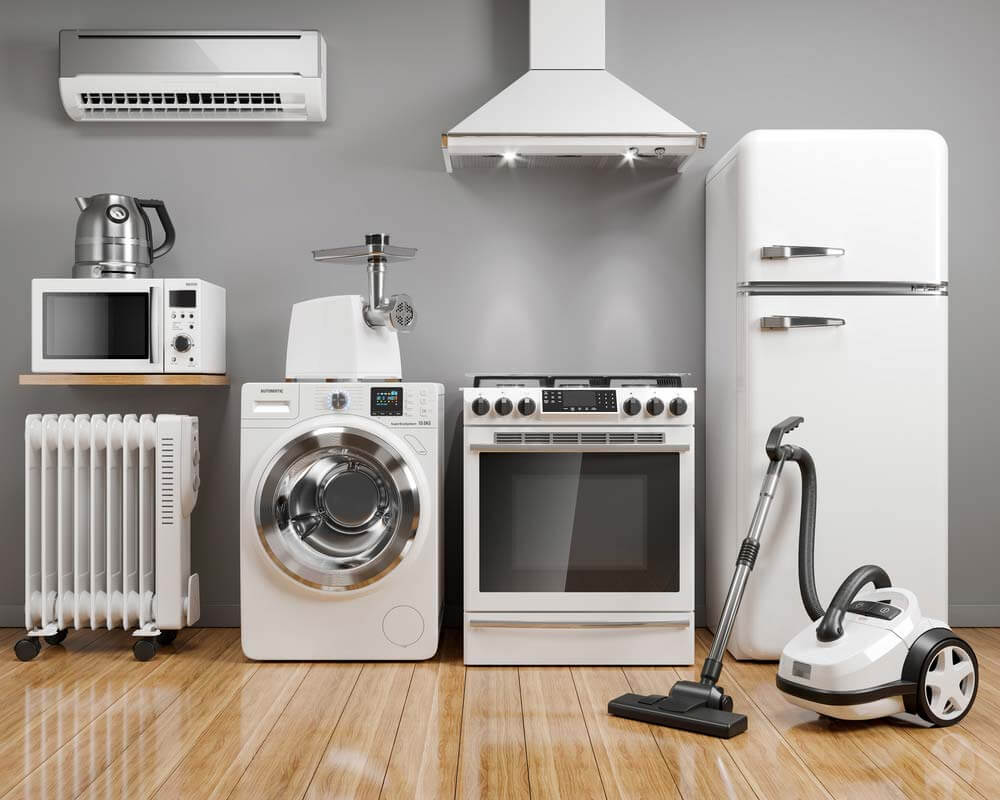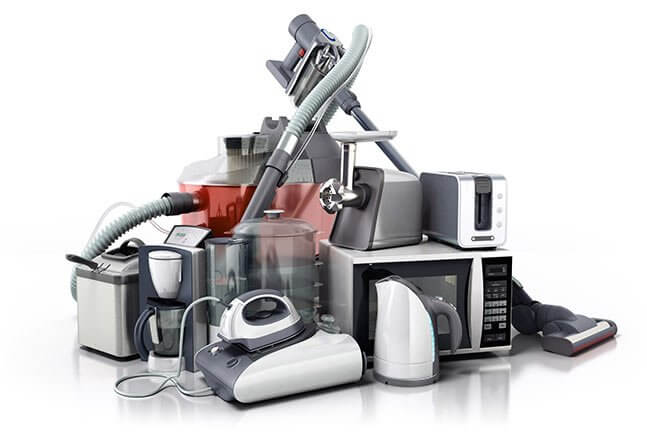
The heart of every home is undoubtedly the kitchen, and at the heart of every kitchen lies an array of small kitchen appliances that make our lives easier. From the trusty coffee maker that jump-starts our mornings to the versatile food processor that helps us prepare gourmet meals, these appliances are essential to our daily routines. However, just like any other piece of machinery, they can sometimes throw a wrench in the works. Fear not! This extensive guide will empower you to troubleshoot and fix common issues with your small kitchen appliances.
The Stubborn Toaster Dilemma: When Toasting Turns Into a Battle
Issue: Your toaster isn’t performing its primary function – toasting bread. Instead, it’s turning into a bread-warming device, leaving you with underwhelming results.
Solution: Let’s dive deeper into resolving this issue:
Clean the Crumb Tray
The crumb tray is the unsung hero of your toaster. Over time, it accumulates a small mountain of crumbs, which can prevent even toasting. To restore your toaster’s glory, start by cleaning the crumb tray. Follow these steps:
- Unplug the toaster and let it cool down.
- Locate and remove the crumb tray, which is often at the bottom of the toaster.
- Empty the crumbs into the trash and wipe the tray clean.
- Reinsert the clean crumb tray into the toaster.
Adjust the Browning Control
If your toast isn’t crispy enough or tends to come out too dark, it might be due to the browning control setting. You can usually find this control knob on the side of your toaster. Here’s what you should do:
- Plug in the toaster and put a slice of bread in it.
- Turn the browning control to a slightly higher setting.
- Start the toaster and check if it toasts the bread to your desired level.
- Adjust the setting until you achieve your preferred toastiness.
Check the Power Source
Sometimes, the simplest solutions are the most effective. Before you go deep into troubleshooting, check the power source:
- Ensure the toaster is properly plugged into the electrical outlet.
- Verify that the outlet is functioning correctly by plugging in another device.
- If the outlet works, try a different outlet or extension cord with your toaster to rule out power issues.
The Moody Microwave Mystery: Solving Uneven Heating

Issue: Your microwave oven isn’t heating your food evenly. Some parts of your dish resemble a scorching desert, while others stay as frigid as the Arctic.
Solution: Let’s microwave away this conundrum:
Rotate and Stir
One of the simplest solutions is to rotate your dish and stir your food during the cooking process. Here’s how it works:
- If you’re heating or cooking something for an extended period, like a frozen meal, pause the microwave halfway through the cooking time.
- Open the door and carefully rotate your dish.
- Stir the food to redistribute heat evenly.
- Resume cooking until it’s done.
Clean the Turntable
The turntable in your microwave plays a crucial role in ensuring even heating. It can get dirty or misaligned, leading to uneven results. To address this:
- Unplug the microwave and remove the turntable and support ring.
- Wash them with warm, soapy water, and dry them thoroughly.
- Make sure they’re seated correctly when you put them back.
Check for Magnetron Issues
If uneven heating continues to be a problem, it may be a more complex issue related to the magnetron, which generates the microwave’s heat. You might need to call a professional technician for this.
The Sulking Blender Situation: When the Blades Refuse to Spin
Issue: Your blender, the superhero of smoothies and soups, has gone silent, refusing to blend even the softest of fruits.
Solution: Let’s blend our way out of this pickle:
Inspect the Blade Assembly
Blender blades are the unsung heroes behind those silky smoothies. However, if they’re not securely attached to the blender jar, your blending game may suffer. Follow these steps:
- Unplug the blender for safety.
- Carefully remove the blender jar from the base.
- Examine the blade assembly. Ensure it’s seated securely and properly aligned with the blender’s base.
- Reassemble the blender and plug it in. Try blending a small amount to test if it works.
Blend in Batches
Overloading your blender can strain the motor and cause it to stop working temporarily. To prevent this:
- Cut your ingredients into smaller pieces.
- Blend in smaller batches, giving the motor a chance to work without being overloaded.
- If you’re making a large quantity, pulse the blender on and off to reduce strain on the motor.
Fuse Check
If your blender remains unresponsive, it’s time to check the fuse or circuit breaker. Here’s how:
- Unplug the blender.
- Check the user manual for the location of the fuse or circuit breaker on your blender.
- If the fuse is blown or the circuit breaker is tripped, follow the instructions in the manual to reset or replace it.
The Spiteful Coffee Maker Standoff: Weak Brews and Coffee Catastrophes
Issue: Your coffee maker, the loyal guardian of your caffeine fix, seems to have developed a grudge against your morning brew. It’s either spitting out weak coffee or refusing to work at all.
Solution: Time to wake up and smell the coffee – literally:
Clean the Coffee Maker
Coffee makers can accumulate residue over time, leading to poor performance. Cleaning is often the key to fixing this issue:
- Mix equal parts of white vinegar and water.
- Pour the vinegar-water solution into the water reservoir.
- Run a brewing cycle without coffee grounds.
- After the cycle is complete, run a few cycles with clean water to remove any vinegar residue.
Use Fresh Beans
If your coffee tastes weak, it might be the quality of the coffee beans you’re using. Here’s what you can do:
- Use high-quality, fresh coffee beans. Stale or low-quality beans can result in weak coffee.
- Grind your beans just before brewing. Pre-ground coffee can lose its flavor quickly.
Check the Water Reservoir
Sometimes, your coffee maker won’t work because the water reservoir isn’t filled to the appropriate level. Make sure to:
- Check that the water reservoir is filled with enough water for your desired number of cups.
- Some coffee makers won’t brew unless there’s a minimum amount of water in the reservoir. Consult your user manual for specifics.
The Dishwasher Drama: When Dirty Dishes Remain Unwashed
Issue: Your dishwasher, the unsung hero of the post-meal cleanup, isn’t performing as it should. It’s leaving your dishes as dirty as a pig in the mud.
Solution: Time to scrub up this mess:
Pre-rinse Dishes
If your dishwasher struggles with stubborn food residue, it might be time to give your dishes a quick rinse before loading them into the dishwasher:
- Scrape off large food particles from your dishes and utensils.
- Rinse the dishes under running water to remove any remaining food debris.
- Avoid using excessive detergent, as this can lead to a soapy residue on your dishes.
Clean the Spray Arms
Clogged spray arms can lead to poor cleaning results. Here’s how you can address this:
- Remove the bottom rack of the dishwasher to access the lower spray arm.
- Unscrew the spray arm and check for clogs.
- Use a pipe cleaner or a small brush to remove any debris.
- Reassemble and reinsert the spray arm.
Check Detergent Dispenser
The detergent dispenser plays a crucial role in the cleaning process. It should open at the right time during the cycle. Here’s what you can do:
- Ensure the detergent dispenser isn’t blocked by dishes or utensils.
- Check if it opens at the appropriate time in the wash cycle.
- If it’s not opening, you may need to replace the detergent dispenser.
The Troublesome Slow Cooker Snag: When Slow Becomes Stopped
Issue: Your trusty slow cooker has decided to take the “slow” part a bit too seriously. It’s not heating up as it should.
Solution: Let’s rev up the slow cooker:
Check the Power Cord
Start with the basics. Make sure the power cord is undamaged and that the slow cooker is properly plugged in. If the cord is frayed or damaged, replace it before proceeding.
Examine the Heating Element
The heating element is the heart of your slow cooker, and if it’s malfunctioning, your food won’t cook as it should. Here’s what you should do:
- Unplug the slow cooker and let it cool down if it was in use.
- Examine the heating element for any visible damage or signs of wear and tear.
- If the element appears damaged, you may need to replace it. Consult your slow cooker’s manual for guidance.
Inspect the Lid Seal
A loose or damaged lid seal can lead to heat loss and undercooked food. To address this issue:
- Check the lid seal to ensure it’s properly seated and in good condition.
- Replace the lid seal if it’s loose, cracked, or damaged.
The Whiny Food Processor Woe: When Chopping Becomes a Chorus of Noise
Issue: Your food processor is making noises that belong in a sci-fi movie, and it’s not chopping or slicing as it should.
Solution: Let’s get your food processor humming the right tune:
Re-seat the Blade
The blade is the workhorse of your food processor, and if it’s not seated correctly, you might hear unusual noises and experience inefficiency. Here’s how you can address this:
- Unplug the food processor for safety.
- Carefully remove the food processor bowl from the base.
- Examine the blade to ensure it’s seated securely and properly aligned with the processor’s base.
- Reassemble the food processor and plug it in. Test by processing a small amount to see if it works correctly.
Pulse Instead of Continuous Use
Food processors are versatile, but using them continuously for heavy tasks can strain the motor. To prevent motor strain and unusual noises:
- When working with tougher ingredients, use the pulse function instead of continuous operation. Pulsing gives the motor time to rest and cool between bursts of activity.
- If your food processor still makes unusual noises, particularly if accompanied by a burning smell, your motor might be overheating. In this case, stop using the food processor, unplug it, and allow it to cool down before attempting to use it again.
Motor Overheating
If you’ve followed the previous steps and the noise persists, it might indicate a motor issue, and it’s time to consult a professional technician to assess and repair the problem.
The Ice Cream Maker Meltdown: When Frozen Treats Turn Into a Frosty Fiasco

Issue: Your ice cream maker, the herald of homemade frozen delights, has turned cold on you – and not in a good way. It’s not freezing your ice cream mix as it should.
Solution: Don’t let your dreams of homemade ice cream melt away:
Pre-chill the Bowl
Before using your ice cream maker, it’s essential to ensure the freezer bowl is thoroughly frozen. Different models may have varying requirements, but many require the bowl to be frozen for a minimum of 24 hours. Here’s what you should do:
- Check the user manual for your ice cream maker to determine the recommended freezing time for the bowl.
- Place the freezer bowl in the freezer and allow it to freeze for the recommended duration.
Check the Mix Consistency
The consistency of your ice cream mix is crucial for successful ice cream making. Here’s how you can ensure your mix is just right:
- Make sure your ice cream mix is well-chilled before pouring it into the frozen bowl.
- Follow the specific recipe instructions for your ice cream maker to achieve the appropriate mix consistency.
Motor Malfunction
If, after following the previous steps, your ice cream maker still doesn’t freeze the mix, it may be a motor issue. In this case, it’s best to contact a professional technician to diagnose and repair the problem.
Final Words
Small kitchen appliances are the unsung heroes of our daily lives, making our culinary adventures easier and more enjoyable. When they misbehave, a little troubleshooting can often bring them back to life. Remember to keep them clean, use them wisely, and don’t hesitate to seek professional help when necessary. With the tips and solutions provided in this guide, you can now unleash your inner kitchen wizard and conquer any appliance-related challenge that comes your way. So go forth, fearless chefs, and continue creating culinary masterpieces with confidence and flair! Happy cooking!
Frequently Asked Questions (FAQ) – Troubleshooting Small Kitchen Appliances
Have questions about troubleshooting small kitchen appliances? We’ve got answers! Check out this list of frequently asked questions to help you navigate common issues with your kitchen gadgets.
1. How can I fix my toaster if it’s not toasting properly?
Answer: If your toaster isn’t toasting as expected, you can start by cleaning the crumb tray, adjusting the browning control, and checking the power source. Cleaning the crumb tray ensures even toasting, while adjusting the browning control can help you achieve your desired level of toasting. Additionally, verifying the power source by ensuring the toaster is properly plugged in and checking the outlet’s functionality can resolve the issue.
2. What should I do when my microwave heats food unevenly?
Answer: Uneven heating in a microwave can be resolved by rotating and stirring your food during the cooking process. This redistributes heat and ensures even cooking. Cleaning the turntable and checking for magnetron issues can also help address the problem.
3. My blender isn’t blending. What’s the solution?
Answer: When your blender refuses to blend, start by inspecting the blade assembly. Ensure the blade is securely attached to the blender jar. Additionally, avoid overloading the blender, as it can strain the motor. If the blender remains unresponsive, check the fuse or circuit breaker and replace them if necessary.
4. How can I address the issue of my coffee maker making weak coffee?
Answer: To fix weak coffee, clean your coffee maker regularly with a vinegar-water solution. Ensure you use high-quality, fresh coffee beans and grind them just before brewing. Always check that the water reservoir is filled to the appropriate level, as some coffee makers won’t brew without a minimum amount of water.
5. My dishwasher isn’t cleaning dishes properly. What should I do?
Answer: When your dishwasher leaves dishes dirty, consider pre-rinsing dishes before loading them. Clean the spray arms to ensure proper water circulation and check the detergent dispenser for blockages. Proper maintenance and pre-rinsing can often lead to better cleaning results.
6. How can I troubleshoot my slow cooker if it’s not heating correctly?
Answer: If your slow cooker isn’t heating up as it should, start by checking the power cord and ensuring it’s properly plugged in. Examine the heating element for any damage. Finally, inspect the lid seal to prevent heat loss during cooking.
7. My food processor is making strange noises. How can I fix it?
Answer: Unusual noises from your food processor can be addressed by re-seating the blade to ensure it’s properly aligned with the processor’s base. Avoid continuous use and opt for pulsing when dealing with tough ingredients. If the problem persists, consult a professional technician.
8. My ice cream maker isn’t freezing the mix. What should I do?
Answer: To ensure your ice cream maker freezes the mix properly, always pre-chill the freezer bowl for the recommended duration. Check the consistency of your ice cream mix, and make sure it’s well-chilled before using. If the ice cream maker still doesn’t freeze the mix, it may indicate a motor issue, requiring professional assistance.